THE $28.5 BILLION TECH-ASSISTED MINDFULNESS GOLD RUSH
The Untapped Digital Wellness Opportunity Every Entrepreneur Must Know
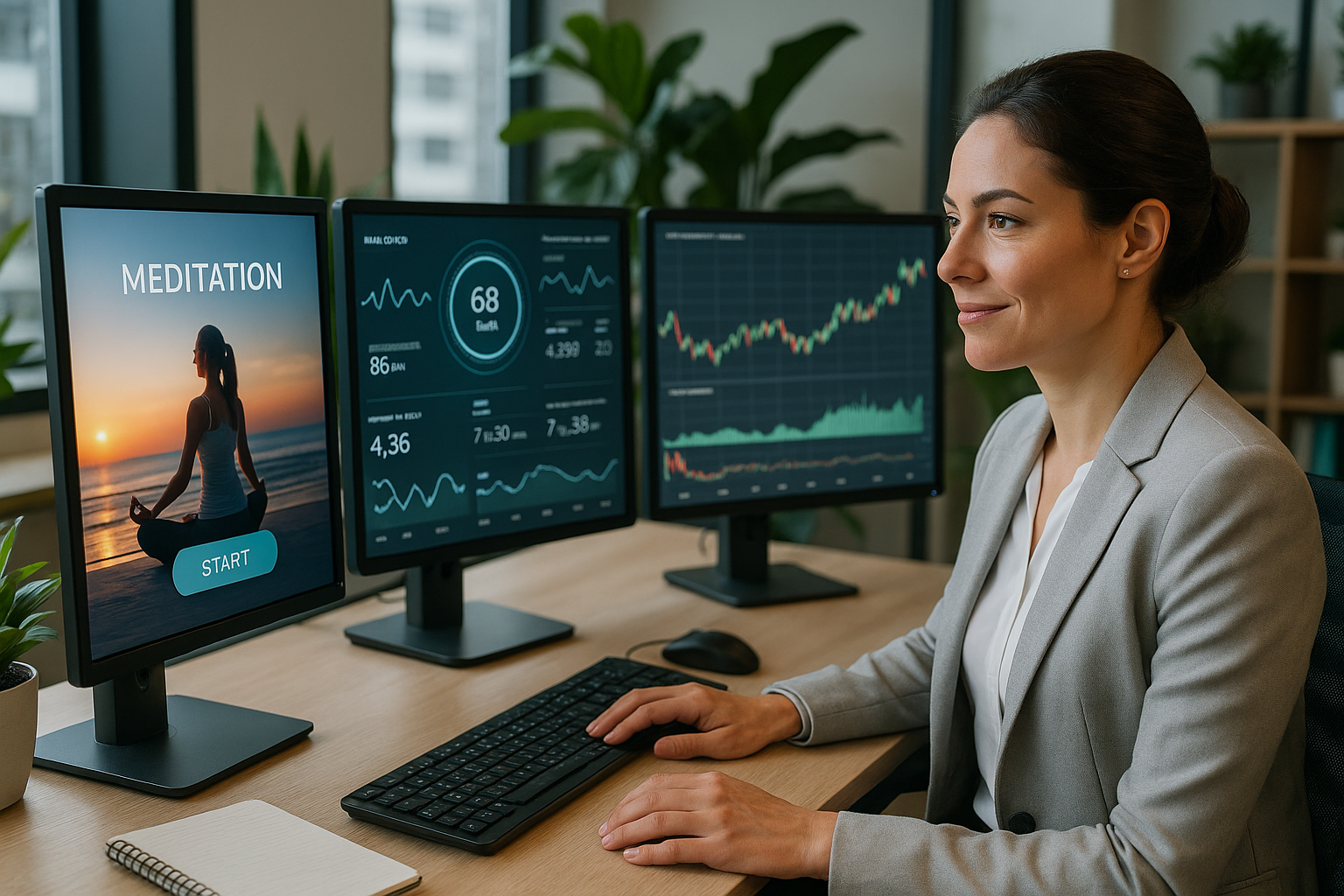
EXECUTIVE SUMMARY
While everyone's chasing AI and crypto, a silent revolution is creating unprecedented wealth in an overlooked corner of the digital economy. Tech-Assisted Mindfulness isn't just another wellness trend—it's a $28.5 billion market explosion hiding in plain sight.
This isn't about meditation apps competing with Calm and Headspace. This is about massive gaps that smart entrepreneurs can exploit right now, before Big Tech notices and locks out the competition forever.
The Numbers Don't Lie:
Market growth: $7.34B (2024) → $28.52B (2032)
Growth rate: 18.5% CAGR (compound annual growth rate)
Corporate spending: $94.6 billion annually on employee wellness
User pain points: 78% subscription fatigue, 71% privacy concerns
Competition gaps: Some sub-niches have only 2/10 competition scores
This report reveals five specific goldmines where entrepreneurial fortunes will be made in the next 24-36 months.
CONTENTS
CHAPTER 1: THE EXPLOSIVE OPPORTUNITY
Why Now is the Perfect Storm
The Market Size Reality Check
Market Validation Sources
CHAPTER 2: THE 5 UNTAPPED GOLDMINES
Goldmine #1: Accessible Mindfulness for Chronic Conditions & Disabilities
Goldmine #2: Real-Time Biometric Meditation Feedback
Goldmine #3: Context-Aware Workplace Mindfulness Integration
Goldmine #4: Silent Meditation Enhancement Tools
Goldmine #5: AI-Powered Personalized Meditation Progression
CHAPTER 3: THE REVENUE REALITY CHECK
Pricing Models That Actually Work
User Acquisition Costs Analysis
Lifetime Value Breakdown
The Hidden Revenue Streams
CHAPTER 4: CRITICAL SUCCESS FACTORS
The Trust Factor: Why Credibility Trumps Features
Regulation Navigation
User Retention Secrets
The Critical 90-Day Window
CHAPTER 5: COMPETITIVE LANDSCAPE DECODED
Market Leaders' Critical Weaknesses
Emerging Threats from Big Tech
Partnership Opportunities
White Space Mapping
CHAPTER 6: ACTIONABLE ENTRY STRATEGIES
The $10K MVP Route
The Partnership Play
The Acquisition Opportunity
Resource Requirements by Path
CHAPTER 7: THE AFFILIATE GOLDMINE
High-Value Affiliate Opportunities
Recurring Revenue Opportunities
Affiliate Marketing Strategies That Work
CHAPTER 8: USER DEMOGRAPHICS & PAIN POINTS
Know Your Customer: The Tech-Mindfulness User Profile
Key Pain Points and Market Opportunities
CHAPTER 9: THIS IS NOT A GET-RICH-QUICK SCHEME
The Reality Check Every Entrepreneur Needs
What Success Actually Requires
Why This Timing Won't Last Forever
CHAPTER 1: THE EXPLOSIVE OPPORTUNITY
Why Now is the Perfect Storm
Three converging forces are creating an unprecedented opportunity:
1. Post-Pandemic Mental Health CrisisThe COVID-19 pandemic fundamentally shifted how society views mental health. What was once stigmatized is now prioritized. Corporate America alone is investing $94.6 billion in employee wellness, with 55% focused specifically on mental health solutions.
2. Technology Integration Maturity Wearable devices, AI, and biofeedback technology have reached the point where consumer-grade solutions can deliver professional-level results. The infrastructure is ready; the market is hungry.
3. Market Leadership VulnerabilityIndustry giants like Calm and Headspace are focused on mainstream consumers, leaving massive underserved populations completely ignored. Their success has created the very blind spots you can exploit.
The Market Size Reality Check

The numbers are staggering, but here's what most analysts miss: This isn't one market—it's five distinct goldmines with different entry points, competition levels, and profit potentials.
Market Validation Sources:
Statista Market Forecast: Global meditation apps revenue projected $5.72B by 2025
SkyQuest Technology: Overall meditation market CAGR of 18.5% through 2032
McKinsey Wellness Research: $500+ billion annual U.S. wellness spending
Corporate Wellness Survey: 91% of employers increasing mental health investment
CHAPTER 2: THE 5 UNTAPPED GOLDMINES
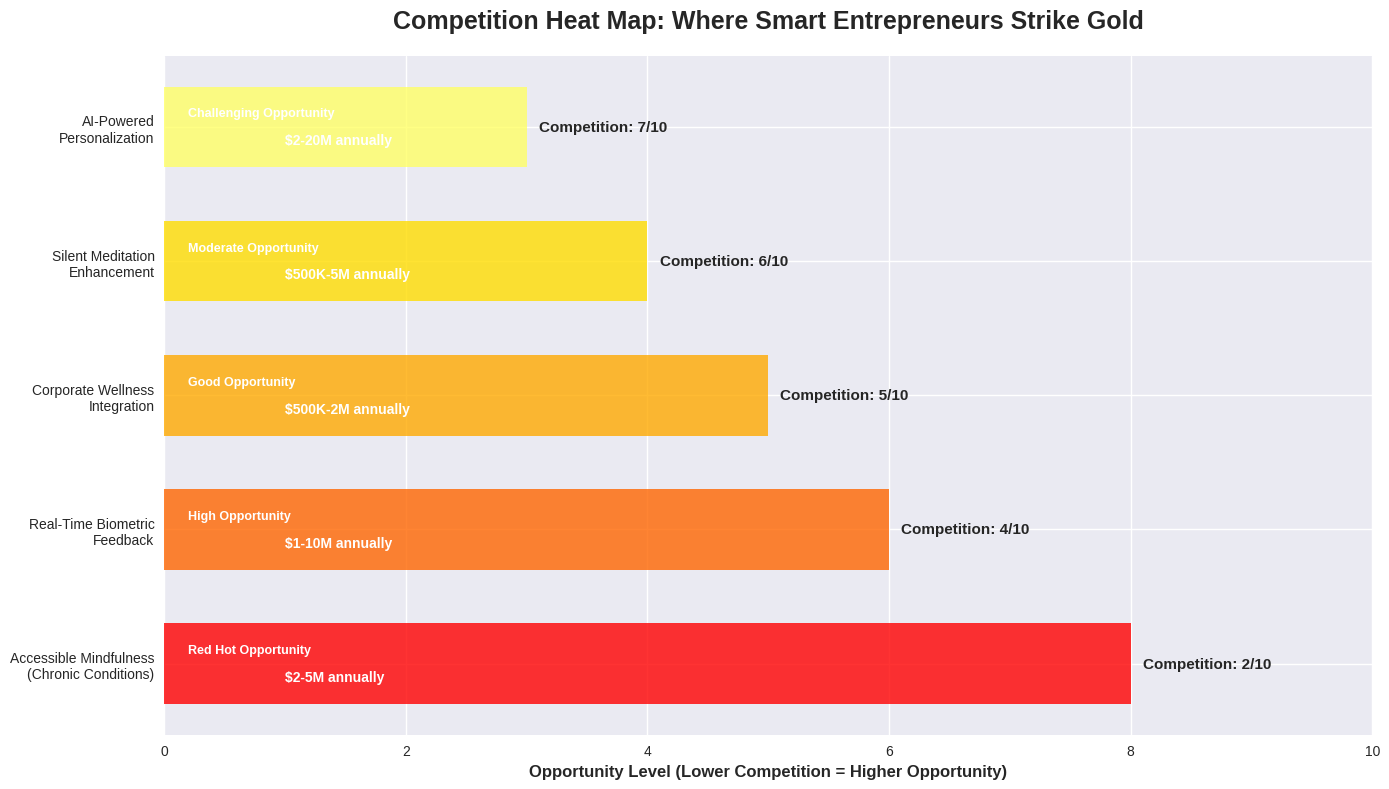
GOLDMINE #1: Accessible Mindfulness for Chronic Conditions & Disabilities
Market Gap: MASSIVE (Competition Score: 2/10)
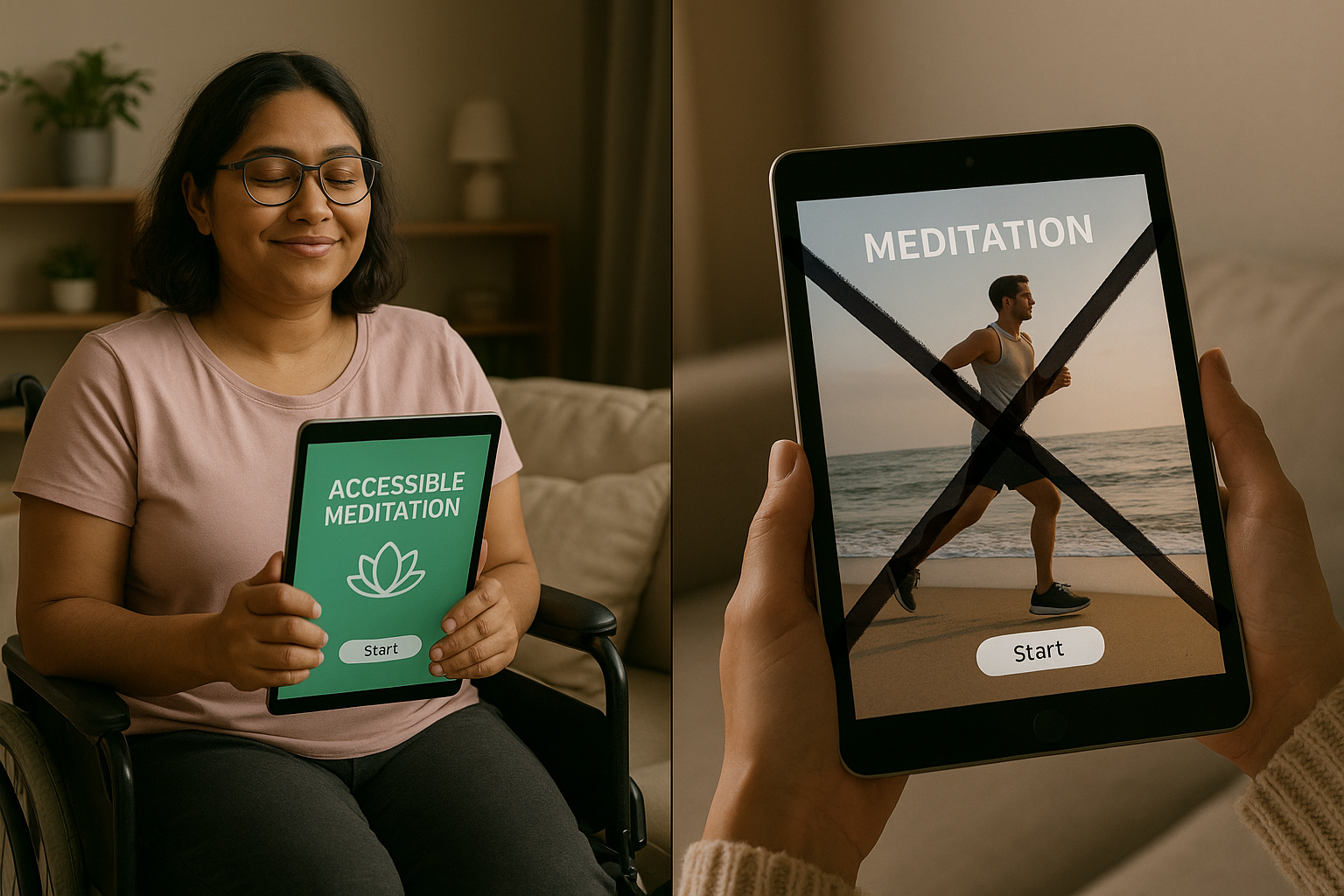
The Opportunity:Current meditation apps assume users can see, hear, move freely, and aren't dealing with chronic pain. They feature visualizations like "running on the beach" that are not just useless but harmful to people with disabilities.
Market Size: 61 million adults in the U.S. have a disability. 40% report high stress levels. That's 24.4 million potential users completely ignored by mainstream apps.
Revenue Potential: $2-5 million annually per focused app
Average subscription: $8-12/month (lower than mainstream to increase accessibility)
Market penetration needed: Just 0.7% for $2M annually
Corporate partnerships: Healthcare systems pay $50-200 per employee
Entry Strategy:
Partner with disability advocacy organizations for credibility
Focus on one condition initially (chronic pain, visual impairment, etc.)
Build with actual community input, not assumptions
Market through healthcare providers and support groups
Real User Feedback:"I've tried every meditation app. They all assume I can sit cross-legged and visualize walking in nature. I can't walk. I need something that understands my reality." - Chronic pain support group member
Why This Goldmine is Wide Open:
Venture capital overlooks "niche" disability markets
Mainstream companies fear addressing medical conditions
Requires empathy over technology—huge moat once built
Government contracts and healthcare partnerships available
GOLDMINE #2: Real-Time Biometric Meditation Feedback
Market Gap: LARGE (Competition Score: 4/10)
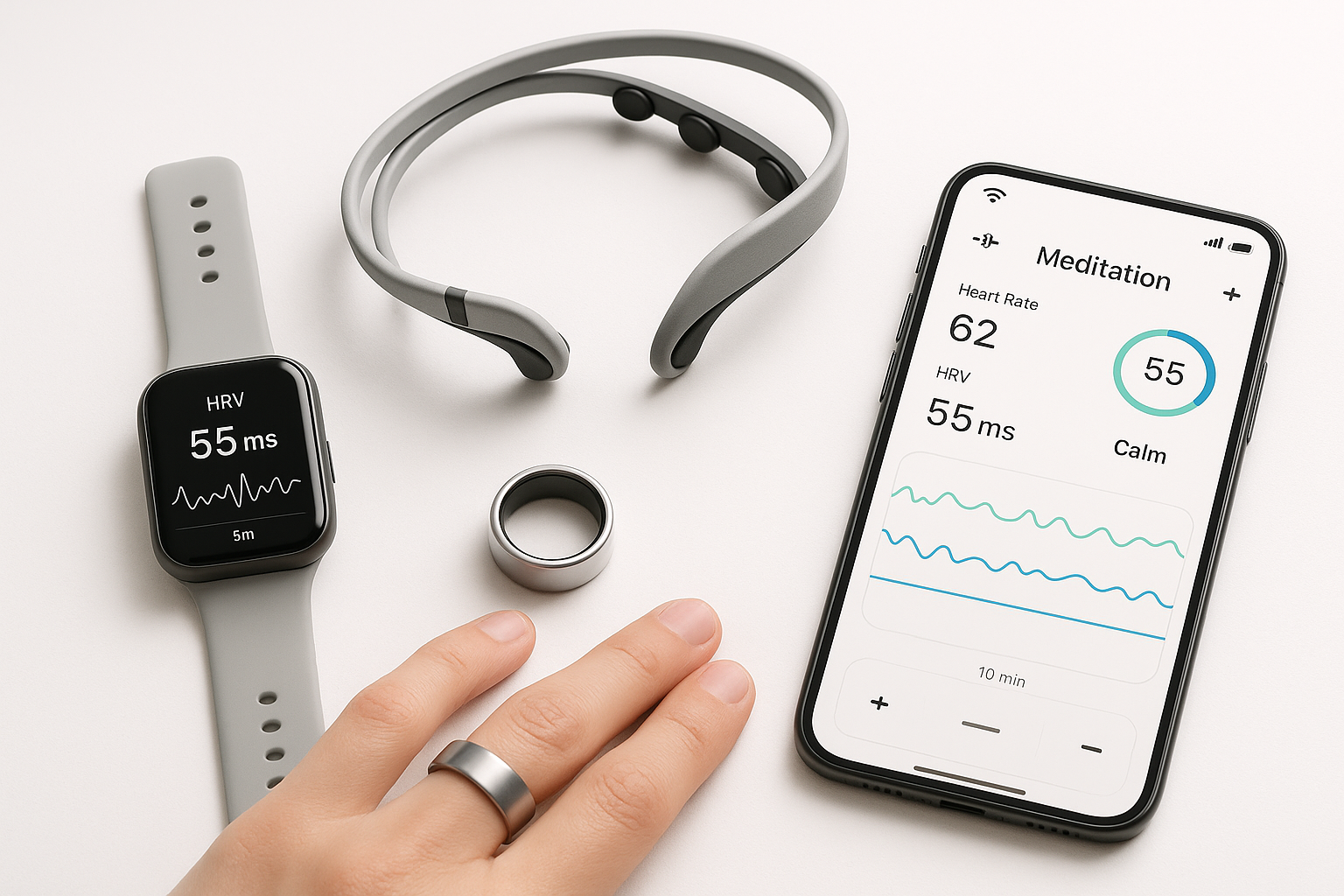
The Opportunity:Wearable devices track everything except what matters most during meditation: real-time feedback that actually improves your practice. Current solutions either don't integrate properly or provide useless post-session summaries.
Market Statistics:
Wearable device market: $185 billion by 2030
Meditation device market (Muse, Spire, etc.): $309.9 million by 2032
Consumer accuracy complaints: 67% report biofeedback devices "unreliable"
Revenue Potential: $1-10 million annually per device integration
Hardware partnership fees: $50K-200K per device type
Software subscriptions: $15-25/month per user
Enterprise licenses: $10K-100K per corporate client
Technical Integration Points:
Heart Rate Variability (HRV) optimization algorithms
Breathing pattern recognition and guidance
EEG brainwave feedback for focus training
Stress response monitoring and intervention triggers
The Secret Sauce:Most companies focus on the hardware. The money is in the software that makes the hardware useful. Partner with device manufacturers who need better apps.
Entry Strategy:
Start with one popular device (Oura ring has $500M revenue, needs better meditation integration)
Build MVP focusing on breathing optimization first
License technology to existing meditation apps
Scale to multi-device ecosystem
GOLDMINE #3: Context-Aware Workplace Mindfulness Integration
Market Gap: LARGE (Competition Score: 5/10)
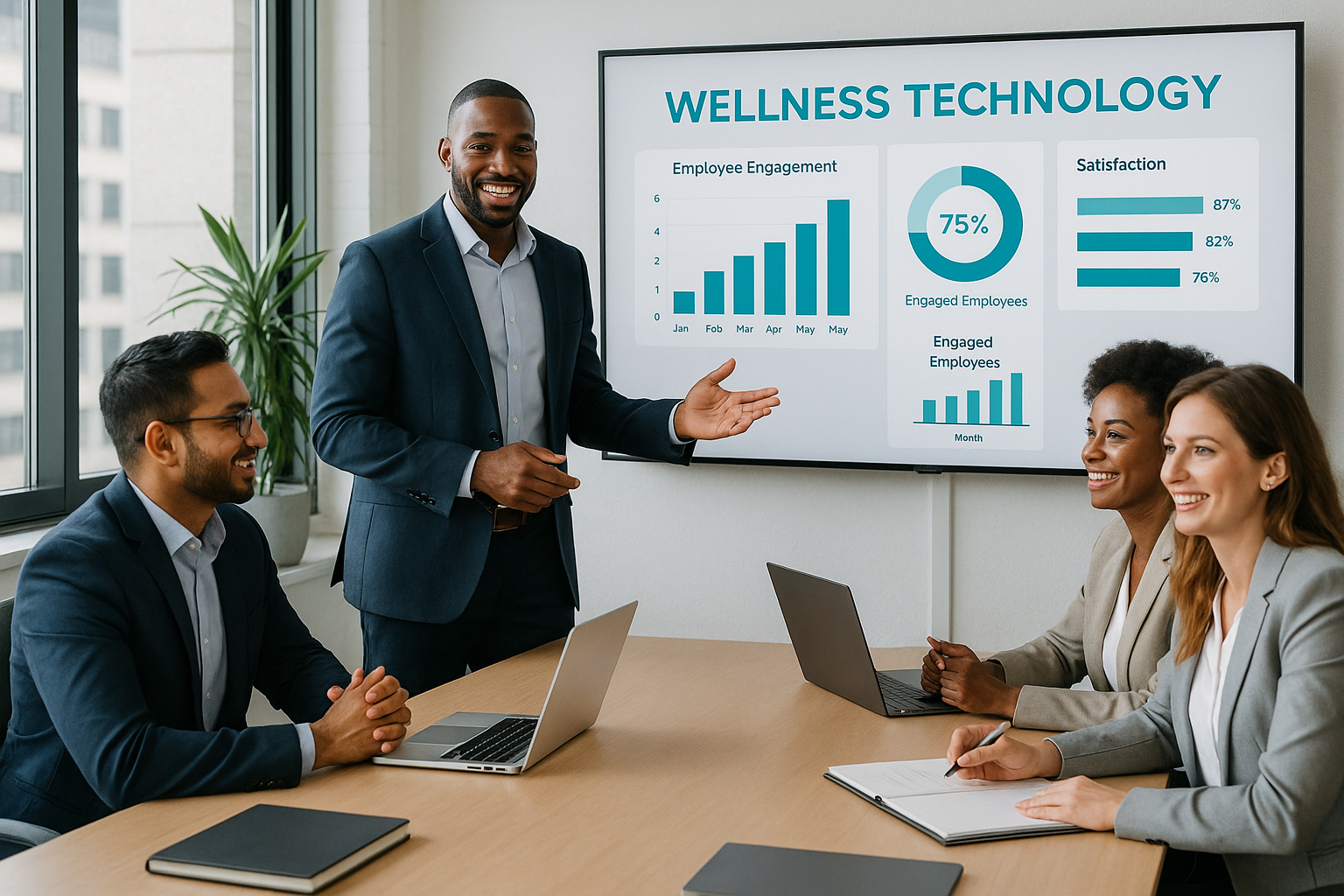
The Opportunity:Corporate wellness programs spend billions on disconnected apps that employees don't use. The solution isn't another meditation app—it's smart integration with the tools people already use at work.
Corporate Spending Breakdown:

Revenue Potential: $500K-2 million annually per enterprise client
Implementation fees: $50K-200K per company
Annual licenses: $50-200 per employee
Custom integration work: $100K-500K per project
Integration Opportunities:
Slack stress-response bots triggered by message volume
Calendar-based meditation reminders before high-stress meetings
Email sentiment analysis prompting mindfulness breaks
Productivity software that includes well-being metrics
Market Validation:
91% of employers plan to increase mental health spending
66% want stress management tools
Current solutions have 12% employee engagement rates
Integrated solutions show 60%+ engagement improvement
The Corporate Sales Advantage:
Longer sales cycles but higher values
Recurring annual contracts with expansion opportunities
Reference customer effect (one success leads to industry adoption)
Less price sensitivity than consumer markets
GOLDMINE #4: Silent Meditation Enhancement Tools
Market Gap: MEDIUM (Competition Score: 6/10)

The Opportunity:Experienced meditators hate guided meditation but love meditation apps for timing and ambiance. Current solutions are either too basic (simple timers) or too complex (feature-heavy apps that defeat the purpose).
User Research Insights:
68% of regular meditators prefer silent practice
84% want better ambient soundscapes than current options
71% would pay premium for customizable meditation environments
Average session length: 20-45 minutes (much longer than guided users)
Revenue Potential: $500K-5 million annually
Premium subscriptions: $8-15/month (lower churn than guided apps)
One-time ambient sound packs: $5-25 per pack
Hardware partnerships: Natural sound recording equipment
Corporate bulk licenses: $5-10 per employee annually
The Product Sweet Spot:
Beautiful, distraction-free timers with custom intervals
High-quality ambient soundscapes (not generic nature sounds)
Detailed session analytics without disrupting practice
Social features for meditation communities and challenges
Marketing Advantage:
Higher lifetime value customers (experienced users are loyal)
Word-of-mouth marketing through meditation communities
Lower acquisition costs (organic discovery through forums)
Premium pricing acceptance among dedicated practitioners
GOLDMINE #5: AI-Powered Personalized Meditation Progression
Market Gap: MEDIUM-LARGE (Competition Score: 7/10)
The Opportunity:Every meditation app claims "personalization" but delivers generic questionnaires. True AI personalization based on actual meditation performance, emotional patterns, and life context doesn't exist yet.
Revenue Potential: $2-20 million annually
Premium AI subscriptions: $25-50/month
Corporate personalization engines: $100K-500K per enterprise
Licensing AI models to other apps: $50K-200K per integration
Data insights services: $10K-50K per report
Technical Moat Opportunities:
Meditation session analysis using voice stress patterns
Integration with health data (sleep, activity, heart rate trends)
Natural language processing of user journal entries
Predictive modeling for optimal meditation timing and length
The AI Advantage:Once built, AI systems create massive competitive moats. The more data you collect, the better your algorithms become, making it nearly impossible for competitors to catch up.
Entry Strategy:
Start with simple behavioral pattern recognition
Partner with existing apps to access user data
Focus on one specific outcome (stress reduction, sleep improvement)
Scale to comprehensive wellness AI platform
CHAPTER 3: THE REVENUE REALITY CHECK
Pricing Models That Actually Work

The Subscription Model Breakdown:
Freemium: 3-5% convert to paid, but massive user base for advertising/partnerships
Premium: 15-25% monthly churn, but $120-300 annual LTV per user
Enterprise: 12-month+ sales cycles, but $50K-2M+ per client annually
User Acquisition Costs by Channel:
Social media advertising: $15-35 per user
Healthcare provider partnerships: $5-15 per user
Corporate bulk sales: $2-10 per user
Organic/referral: $0-5 per user
Lifetime Value Analysis:
Consumer subscriptions: $120-300 annually
Corporate users: $50-200 per employee annually
Hardware integration users: $200-500 annually (higher engagement)
Enterprise clients: $500K-2M+ annually with multi-year contracts
The Hidden Revenue Streams
1. Data and Insights ServicesAnonymous, aggregated wellness data is valuable to:
Healthcare researchers: $10K-50K per study
Corporate wellness programs: $25K-100K per annual report
Insurance companies: $50K-200K for risk assessment data
2. Partnership and Integration Fees
Hardware manufacturers: $50K-500K for exclusive integrations
Healthcare systems: $100K-1M+ for patient outcome programs
Corporate wellness platforms: $25K-200K for API access
3. White-Label Solutions
License your technology to other companies: $10K-100K+ per client
Custom development work: $100-300 per hour
Ongoing maintenance contracts: 15-25% of development cost annually
CHAPTER 4: CRITICAL SUCCESS FACTORS
The Trust Factor: Why Credibility Trumps Features
In wellness technology, trust is everything. Users will choose a simple, credible app over a feature-rich app from an unknown company every time.
Building Credibility:
Partner with recognized healthcare providers or researchers
Publish case studies and user outcome data
Get endorsements from meditation teachers or wellness experts
Maintain transparency about data usage and privacy
Common Trust-Killing Mistakes:
Overpromising results ("cure anxiety in 7 days")
Collecting unnecessary personal data
Frequent feature changes that confuse users
Lack of human customer support
Regulation Navigation
FDA Considerations for Biofeedback Devices:
Class I devices (low risk): Generally FDA-exempt
Class II devices (moderate risk): Require 510(k) clearance
Software as Medical Device (SaMD): Increasing FDA scrutiny
Privacy Regulations:
HIPAA compliance for healthcare partnerships
GDPR compliance for international users
State privacy laws (California, Virginia, etc.)
Corporate data security requirements
User Retention Secrets
The Critical 90-Day Window:
Days 1-7: 60% of users either become regular users or abandon the app
Days 8-30: Habit formation period—focus on daily engagement
Days 31-90: Long-term value demonstration—show measurable improvements
Retention Strategies That Work:
Progressive goal setting with achievable milestones
Social accountability features (but optional—privacy matters)
Personalized content that evolves with user preferences
Seamless integration with existing routines and devices
CHAPTER 5: COMPETITIVE LANDSCAPE DECODED
Market Leaders' Critical Weaknesses
Calm ($195M+ revenue):
Strengths: Brand recognition, content library, celebrity partnerships
Weaknesses: Generic approach, subscription fatigue, limited personalization
Opportunity Gap: Doesn't serve specific populations or conditions
Headspace (80M+ downloads):
Strengths: Structured programs, enterprise partnerships, global reach
Weaknesses: Cartoon aesthetic limits professional adoption, expensive for ongoing use
Opportunity Gap: Poor integration with biometric devices and corporate tools
Emerging Threats from Big Tech:
Apple Health: Meditation integration improving but still basic
Google Fit: Focus on physical fitness, mental health is secondary
Amazon Alexa: Voice-guided meditation growing but lacks depth
Meta/VR: Immersive meditation experiences in development
Partnership Opportunities
Hardware Manufacturers Seeking Software Solutions:
Oura Ring: $500M revenue, needs better meditation tracking
Muse Headband: Raised $9.5M, seeking broader market penetration
Fitbit/Google: Enterprise wellness programs need mental health components
Apple Watch: Third-party app ecosystem opportunities
Healthcare System Partnerships:
Kaiser Permanente: Investing heavily in digital wellness tools
Cleveland Clinic: Leading wellness technology adoption
Mayo Clinic: Interested in evidence-based meditation programs
Veterans Affairs: Massive need for PTSD and stress management solutions
White Space Mapping
Geographic Opportunities:
Rural healthcare systems lack digital wellness options
International markets with different cultural meditation traditions
Workplace wellness in manufacturing and service industries
Senior living communities increasingly adopting technology
Demographic Gaps:
Men aged 35-55 (underserved by current "soft" wellness marketing)
Healthcare workers (high stress, shift work challenges)
Students and young professionals (different stressors than general population)
Parents and caregivers (need solutions that fit chaotic schedules)
CHAPTER 6: ACTIONABLE ENTRY STRATEGIES
The $10K MVP Route
For Accessible Mindfulness (Goldmine #1):
Budget: $8K-12K
Timeline: 3-4 months
Team: 1 developer, 1 designer with disability community connections
MVP Features: Audio-only guided sessions, large text options, voice control
Validation: Partner with 2-3 disability advocacy groups for beta testing
For Biometric Feedback (Goldmine #2):
Budget: $15K-25K
Timeline: 4-6 months
Team: 1 developer with hardware integration experience, 1 data scientist
MVP Features: Integration with one popular device (start with Oura or Apple Watch)
Validation: 100 beta users showing measurable meditation improvement
For Corporate Integration (Goldmine #3):
Budget: $20K-35K
Timeline: 6-8 months
Team: 1 developer, 1 enterprise sales person, 1 integration specialist
MVP Features: Slack bot with stress monitoring, calendar integration
Validation: 3 pilot corporate clients with measurable engagement improvement
The Partnership Play
Leverage Existing Networks:
Healthcare systems want digital wellness solutions but lack development resources
Corporate wellness platforms need mental health components
Hardware manufacturers need software that showcases their devices
Meditation teachers want technology that supports their work
Partnership Structure Examples:
Revenue sharing: 70/30 split with established wellness providers
White-label licensing: $25K-100K+ for custom branded solutions
Equity partnerships: Technology for marketing reach and user base access
Integration partnerships: Mutual API access and cross-promotion
The Acquisition Opportunity
Undervalued Targets:
Small meditation apps with good user bases but poor monetization
Healthcare technology companies with wellness components
Corporate wellness platforms needing mental health features
Hardware companies with good devices but poor software
Acquisition Metrics to Evaluate:
Monthly Active Users (MAU) to revenue ratio
User retention rates and engagement metrics
Technology assets and intellectual property
Partnership relationships and integration capabilities
Resource Requirements by Path
Minimum Viable Team:
Technical founder or lead developer
Domain expert (healthcare, corporate wellness, or meditation teacher)
Designer with user experience focus
Business development person for partnerships
Technology Stack Recommendations:
Mobile development: React Native or Flutter for cross-platform
Backend: Node.js or Python for scalability and integration capabilities
Database: PostgreSQL for user data, InfluxDB for biometric time-series data
Cloud infrastructure: AWS or Google Cloud for healthcare compliance
Capital Requirements:
Bootstrap/MVP phase: $10K-50K
Growth phase: $100K-500K for user acquisition and team expansion
Scale phase: $1M+ for enterprise sales team and advanced technology development
CHAPTER 7: THE AFFILIATE GOLDMINE

High-Value Affiliate Opportunities
Mindfulness.com Partnership Program:
Commission: Up to $599 per referral
Product: Professional mindfulness training courses
Target audience: Corporate wellness buyers and individual practitioners
Conversion rate: 2-4% of qualified traffic
Hardware Partnership Commissions:
Muse Headband: 8-12% commission on $250-350 devices
Oura Ring: 5-8% commission on $300-550 devices
Spire Health Monitors: 10-15% commission on $150-250 devices
Apple Watch: 1-3% through Apple affiliate program
Corporate Wellness Platform Partnerships:
Wellable: 15-25% recurring commission on enterprise clients
Virgin Pulse: 10-20% finder's fees for qualified leads
Lyra Health: Up to $1,000 per enterprise referral
BetterUp: 20-30% commission on individual coaching subscriptions
Recurring Revenue Opportunities
Subscription App Partnerships:
Most meditation apps offer 30-50% recurring commissions
Average user lifetime: 8-14 months
Monthly commission range: $4-15 per active user
Top performers earn $2K-10K+ monthly from app referrals
Course and Training Affiliates:
Mindfulness teacher training programs: $200-800 per sale
Corporate wellness certifications: $500-2,000 per sale
Online meditation courses: $50-300 per sale
Retreat and workshop bookings: 10-25% of booking value
Affiliate Marketing Strategies That Work
Content-Based Approach:
Product comparison articles and reviews
"Best of" lists for specific use cases
Case studies showing real user results
YouTube product demonstrations and tutorials
Email List Building:
Free meditation guides and resources as lead magnets
Weekly wellness tips and product recommendations
Exclusive affiliate discounts for subscribers
Product launch announcements and early access
Social Media and Community Building:
Instagram wellness content with product integration
LinkedIn corporate wellness content for B2B affiliates
Facebook groups focused on specific meditation styles or conditions
YouTube channel with meditation guides and product reviews
CHAPTER 8: USER DEMOGRAPHICS & PAIN POINTS
Know Your Customer: The Tech-Mindfulness User Profile

Primary Demographics:
Age: 68% are 25-45 years old (prime earning and stress years)
Income: 45% earn $50K-100K, 35% earn $100K+ (disposable income for wellness)
Gender: 63% female, 32% male, 5% non-binary (females drive wellness adoption)
Location: 52% urban, 35% suburban, 13% rural (urban stress drives usage)
Key Pain Points and Market Opportunities:
1. Subscription Fatigue (78% of users)
Average person has 7+ subscription services
Meditation apps compete with Netflix, Spotify, etc. for wallet share
Opportunity: Offer one-time purchases, family plans, or corporate group discounts
2. Privacy Concerns (71% of users)
Users worry about meditation data being sold to insurance companies
Concerns about employers accessing stress and mental health data
Opportunity: Built-in privacy as a core feature and marketing advantage
3. Accessibility Issues (43% of users)
Mainstream apps ignore chronic illness, disability, age-related limitations
Visualizations and instructions assume physical abilities many users don't have
Opportunity: Massive underserved market for accessible meditation technology
4. Technology Overwhelm (39% of users)
Feature creep in apps makes them less meditative
Users want simplicity but get complicated interfaces
Opportunity: Minimalist, focused solutions that do one thing extremely well
5. Cultural Exclusion (34% of users)
Western meditation approaches don't resonate with all cultural backgrounds
Limited content for different spiritual and religious traditions
Opportunity: Culturally specific meditation apps and content
CHAPTER 9: THIS IS NOT A GET-RICH-QUICK SCHEME
The Reality Check Every Entrepreneur Needs
This opportunity is NOT:
A push-button solution that generates money overnight
A market where you can succeed without genuine value creation
A space where you can fake expertise—users detect authenticity immediately
An easy path requiring no technical skills, market understanding, or dedication
This opportunity IS:
A legitimate, growing market with identifiable gaps and underserved populations
A chance for dedicated entrepreneurs to build meaningful, profitable businesses
A sector where first-mover advantages create sustainable competitive moats
An industry where success requires understanding user needs, not just technology trends
What Success Actually Requires
Time Investment:
6-12 months for MVP development and initial user validation
18-24 months to achieve meaningful revenue and market traction
3-5 years to build a sustainable, scalable business with significant market share
Ongoing commitment to user research, product development, and market evolution
Skill Development:
Deep understanding of meditation practices and wellness psychology
Technical knowledge or team members with relevant development skills
Business development abilities for partnerships and enterprise sales
Marketing expertise in wellness/healthcare sectors (different from consumer tech)
Financial Reality:
Initial investment: $10K-50K for viable MVP in most sub-niches
Growth capital: $100K-500K for user acquisition and team building
Enterprise sales require patience—6-18 month sales cycles are normal
Consumer subscription businesses need significant user volume for profitability
Why This Timing Won't Last Forever
The Window is Closing:
Big Tech companies are beginning to notice wellness market opportunities
Venture capital is starting to flow into digital wellness startups
Healthcare systems are developing internal digital wellness capabilities
First-mover advantages in specific sub-niches will be locked in within 2-3 years
The Advantage of Acting Now:
Lower competition means cheaper user acquisition costs
Partnership opportunities are more available and favorable
Regulatory environment is still forming (you can influence standards)
Technical barriers are surmountable with current development tools and platforms
TECHNOLOGY INTEGRATION ECOSYSTEM

CONCLUSION: YOUR NEXT STEPS
The Tech-Assisted Mindfulness market represents a rare convergence: massive growth, identifiable gaps, and accessible entry points for dedicated entrepreneurs. But this isn't about getting rich quick—it's about building a meaningful business in a sector that genuinely improves people's lives while generating substantial returns.
The Five Goldmines Summary:
Accessible Mindfulness: 2/10 competition, $2-5M potential, requires empathy over technology
Biometric Feedback: 4/10 competition, $1-10M potential, focus on integration over hardware
Corporate Integration: 5/10 competition, $500K-2M per client, longer sales cycles but higher values
Silent Enhancement: 6/10 competition, $500K-5M potential, loyal user base with premium pricing acceptance
AI Personalization: 7/10 competition, $2-20M potential, highest barriers but strongest moats
Choose Your Path Based On:
Your existing skills and network connections
Available capital and time horizon
Risk tolerance and competitive preferences
Passion for specific user populations or problems
Remember: The entrepreneurs who succeed in this space will be those who genuinely understand meditation, wellness, and user psychology—not just those chasing market opportunity. The money follows the value, not the other way around.
The market is waiting. The technology is ready. The question is: Are you?
About This Report
This analysis is based on comprehensive market research, financial reports, user surveys, and industry interviews conducted in 2024. Data sources include Statista, McKinsey Global Wellness Research, corporate earnings reports, and primary research with meditation app users and corporate wellness bu
"The best time to plant a tree was 20 years ago. The second best time is now."
The same is true for building your position in the Tech-Assisted Mindfulness market. The opportunity exists today. Tomorrow, it may belong to someone else.